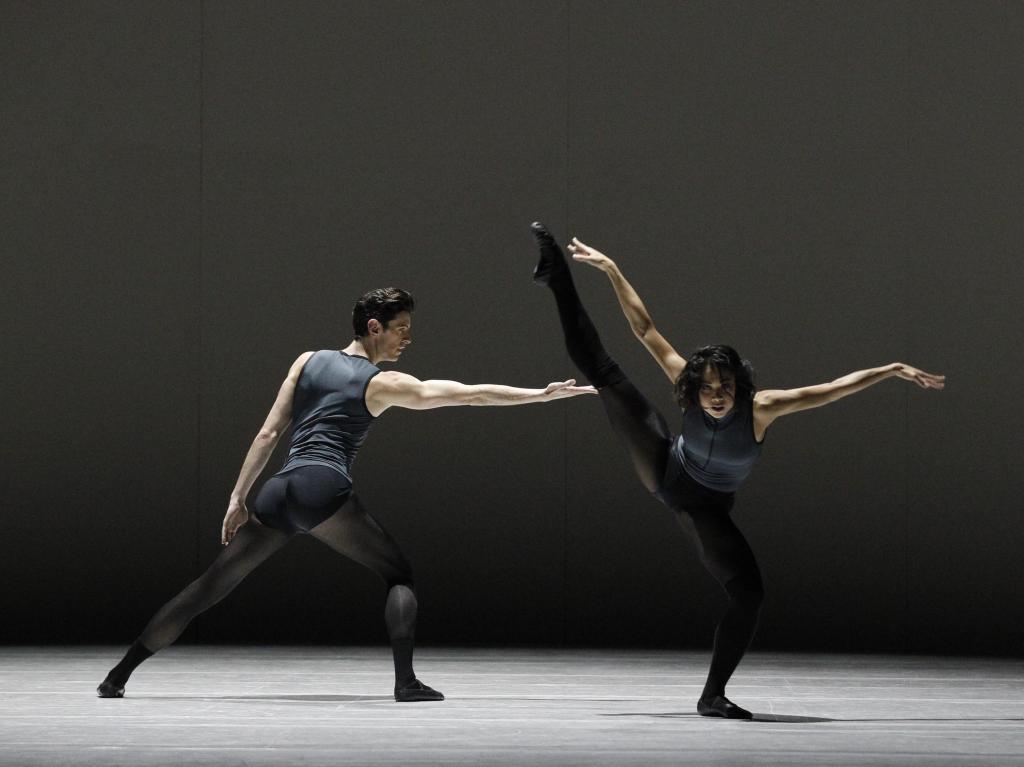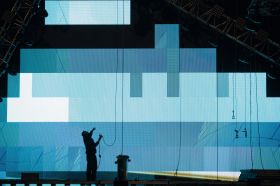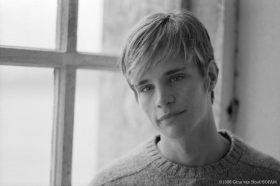Andrew Killian and Vivienne Wong in 20 21 – Filigree and Shadow. Photo: Jeff Busby
Three modern works from the end of the 20th and beginning of the 21st centuries give this program its rather enigmatic name.
The triple bill consists of two modern classics plus a new work created for the Australian ballet by resident choreographer Tim Harbour, with original music by experimental electro-acoustic duo 48nord , Munich-based musicians Ulrich Mueller and Siegfried Roessert.
It is a mark of the high quality of the work that Harbour’s new work Filigree and Shadow felt strong and resolved book-ended by the already venerable 1970s Balanchine work which opened the program and 1980s Twyla Tharp famously iconoclastic In The Upper Room, which was the final work.
Both Filigree and Shadow and In the Upper Room are works of explosive energy, placing gruelling demands on the dancers in their raw physicality, imaginative range and unrelenting movement.
Filigree and Shadow is a dark, almost violent work in which the dancers seem to wrestle and struggle, especially in the magnificent pas de deux at the centre of the work. The pas de deux excepted, it is primarily a group piece in which dancers are pushed and pulled, forced together and torn apart.
The exhausting nature of the work – for audiences as well as the dancers – is heightened by the demanding and overbearing soundtrack, heavily electronic and louder than comfortable.
I found the music sometimes distracting in impact but the choreographer is fabulous and was enthusiastically received by the opening night audience.
It undersells Filigree and Shadow to see it as a curtain raiser for In the Upper Room, it takes movement to new places on its own terms and with a harsher energy than the older and more sustained work. But as a shorter piece which uses only a portion of the range Tharp employs, it did serve to some extent as a kind of introduction.
In the Upper Room is every bit as good and original as it was when Twyla Tharp’s own company introduced it to Melbourne audiences in 1988. The pulsing Phillip Glass score remains demanding – although less so after 48nord – but the choreographer is stunning in its range – particularly in its original lifts and constantly changing vocabulary of movements. The work occurs at an extraordinary pace, dancers run rather than step and often backwards. It’s a work where you don’t want to blink for fear you might miss something.
Visually In the Upper Room is a delight thanks to the Norma Kamali costumes, black and white stripes devolving to striking red as the work heats up. It certainly made a grand finale
Balanchine’s Symphony in Three Movements is a more lyrical work, set to the grand impressionistic score of Stravinsky. Unlike the other two pieces this work is danced to music – with traditional grace and fluidity but a modern minimalism in aesthetics.
Symphony in Three Movements is a ‘leotard ballet’, almost a sustained study in movement and ensemble work. it is very different from the two works that followed and easily shoved out of consciousness by the louder and more dramatic works in the rest of the program. But it is a lovely work to watch with fine ensemble work and a calming purity of line.
The program is ideally structured with Balanchine gently distilling movement, Harbour throwing us up against its most demanding possibilities and Tharp delivering the most satisfying and layered work.
For those who like their dance edgy and energetic, it’s a great program.
Four stars out of five
20:21
Australian Ballet
Arts Centre Melbourne 27 August to 5 September
Sydney Opera House 5 to 21 November
Tickets





